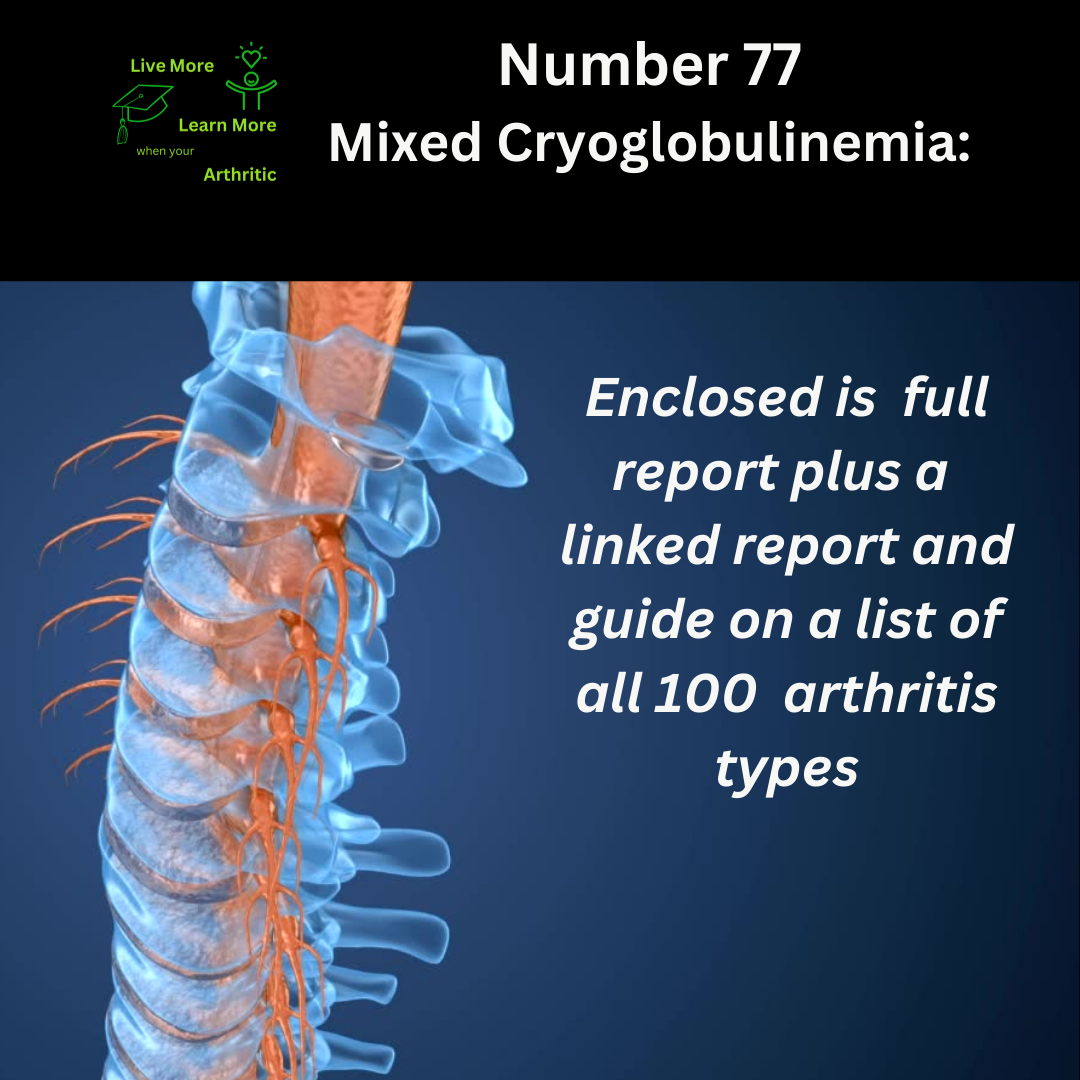
Mixed Cryoglobulinemia: Number 77 on the list of 100 types of Arthritis
Mixed Cryoglobulinemia is a rare and complex condition that affects the immune system, leading to a range of symptoms and potential complications. Understanding this condition requires delving into its characteristics, triggers, and implications for those diagnosed with it.
 What is Mixed Cryoglobulinemia?
What is Mixed Cryoglobulinemia?
Mixed Cryoglobulinemia is a disorder characterized by the presence of abnormal proteins called cryoglobulins in the blood. Cryoglobulins are proteins that become insoluble at cold temperatures, leading to their accumulation and potential blockage of blood vessels. This condition often manifests with symptoms affecting the skin, joints, kidneys, and nervous system.
Description of the Disease
In Mixed Cryoglobulinemia, abnormal cryoglobulins precipitate out of the blood when exposed to cold temperatures, causing inflammation and damage to blood vessels and organs. The immune system’s response to these abnormal proteins can lead to a range of symptoms, including skin rashes, joint pain, fatigue, and potentially severe organ complications.
Causes and Triggers
The exact cause of Mixed Cryoglobulinemia is often unknown, though it is commonly associated with chronic infections like hepatitis C virus (HCV) or certain autoimmune disorders like systemic lupus erythematosus (SLE). Exposure to cold temperatures can trigger symptoms due to the precipitation of cryoglobulins.
Symptoms and Impact on Mobility
Symptoms of Mixed Cryoglobulinemia can vary widely but often include skin manifestations like purpura (purple spots), joint pain and swelling resembling arthritis, weakness, and neuropathy (nerve damage). Joint involvement can restrict mobility and affect daily activities, particularly during flare-ups.
Age of Onset and Lifespan Expectancy
Mixed Cryoglobulinemia can develop at any age, but it commonly appears in middle-aged to older adults. The impact on lifespan can vary depending on the severity of organ involvement and associated complications. With appropriate management, individuals can live a fulfilling life despite this condition.
Autoimmune Nature of Arthritis
Mixed Cryoglobulinemia can be considered a type of autoimmune arthritis, where the immune system mistakenly attacks healthy tissues. This can result in joint inflammation and damage similar to other forms of arthritis.
Achieving a Higher Quality of Life
A proactive approach to managing Mixed Cryoglobulinemia involves regular monitoring by healthcare professionals, avoiding triggers such as cold exposure, and addressing underlying conditions like hepatitis C if present. Lifestyle modifications, including gentle exercise and a balanced diet, can also contribute to improved quality of life.
Possible Complications
Complications of Mixed Cryoglobulinemia can involve severe organ damage, including kidney failure, nerve damage (neuropathy), and increased susceptibility to infections. Close medical supervision is crucial to promptly address any emerging complications.
While specific natural breakthroughs for managing Mixed Cryoglobulinemia are limited, general health practices such as maintaining a healthy diet rich in antioxidants, staying physically active within comfort limits, and managing stress effectively can support overall well-being.
Demographic Patterns
Women are more commonly affected by Mixed Cryoglobulinemia than men. The reasons for this gender disparity are not fully understood but may involve hormonal or immune system differences.
Interconnected Diseases and Conditions
Mixed Cryoglobulinemia can be associated with other autoimmune disorders like rheumatoid arthritis, Sjögren’s syndrome, or vasculitis. It’s essential to be aware of these potential connections to facilitate comprehensive medical management and treatment planning.
In conclusion, while living with Mixed Cryoglobulinemia presents unique challenges, a proactive and informed approach to management can significantly enhance quality of life. By understanding the triggers, symptoms, and potential complications, individuals can work with healthcare providers to optimize treatment strategies and minimize the impact of this complex condition on daily life.


